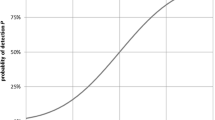Abstract
The definitions used for the k0-constant, the coincidence correction factorc and the detector efficiency εf in the k0-method for NAA provide no means to interprete or correct for interference by artificial peaks. In this paper, extended descriptions for the detector efficiency are proposed to deal with escape peaks. For sum peaks caused by true coincidence, a k1-constant is defined as an alternative for the k0-constant, by separating the k0 into a part related to activation and a part related to spectrometry. The k1-constant is based on experimental data, just like the k0-constant.
Similar content being viewed by others
References
A. SIMONITS, F. DE CORTE, J. HOSTE, J. Radioanal. Chem., 105 (1975) 31.
E. BROWNE, R. B. FIRESTONE, Table of Radioactive Isotopes, John Wiley & Sons, New York, 1986.
K. HEYDORN, Trans. Am. Nucl. Soc., 60 (1989) 3.
Author information
Authors and Affiliations
Rights and permissions
About this article
Cite this article
Blaauw, M., Bode, P. Introduction of the k1-concept for the interpretation of artificial peaks in k0-based NAA. Journal of Radioanalytical and Nuclear Chemistry, Articles 169, 201–208 (1993). https://doi.org/10.1007/BF02046794
Received:
Issue Date:
DOI: https://doi.org/10.1007/BF02046794




